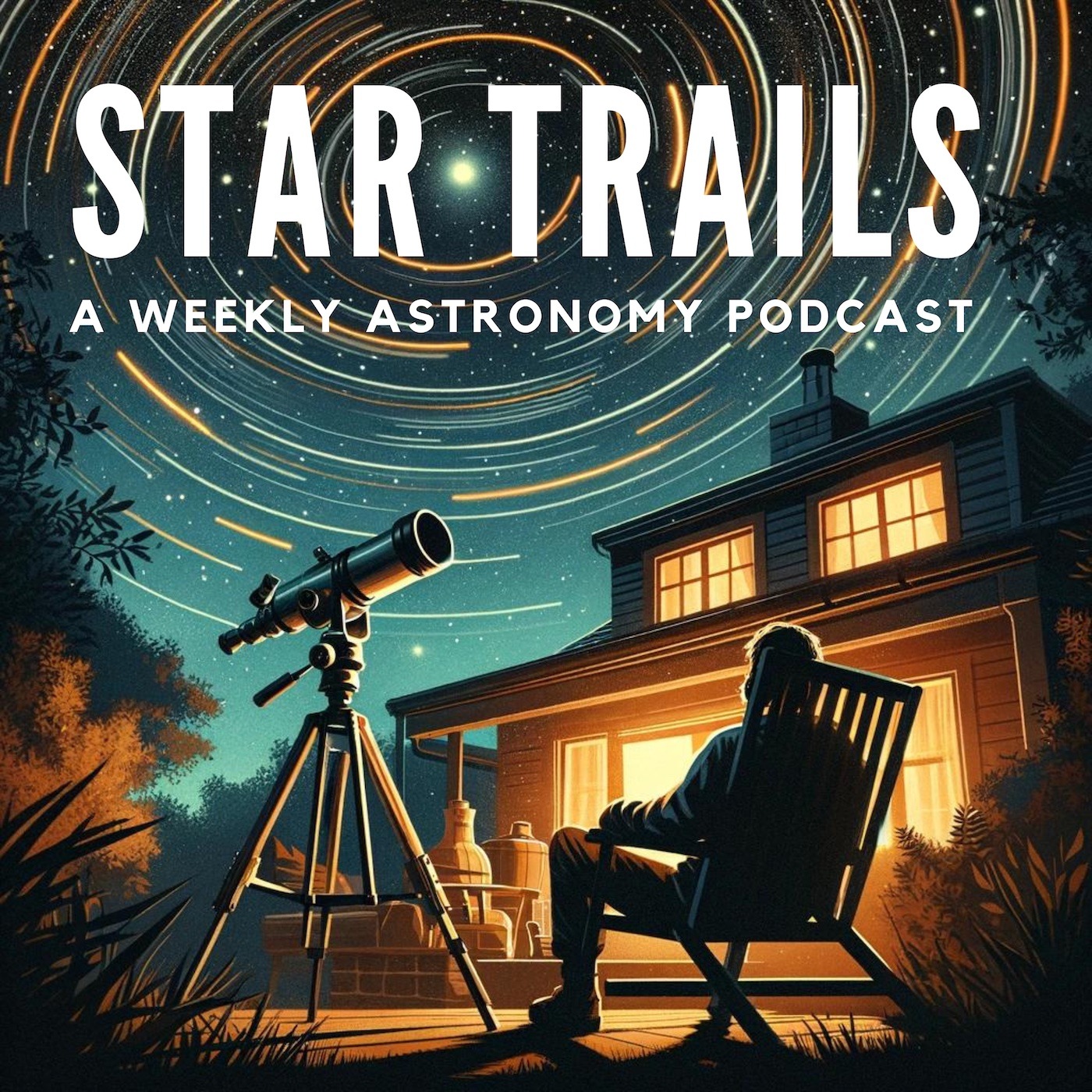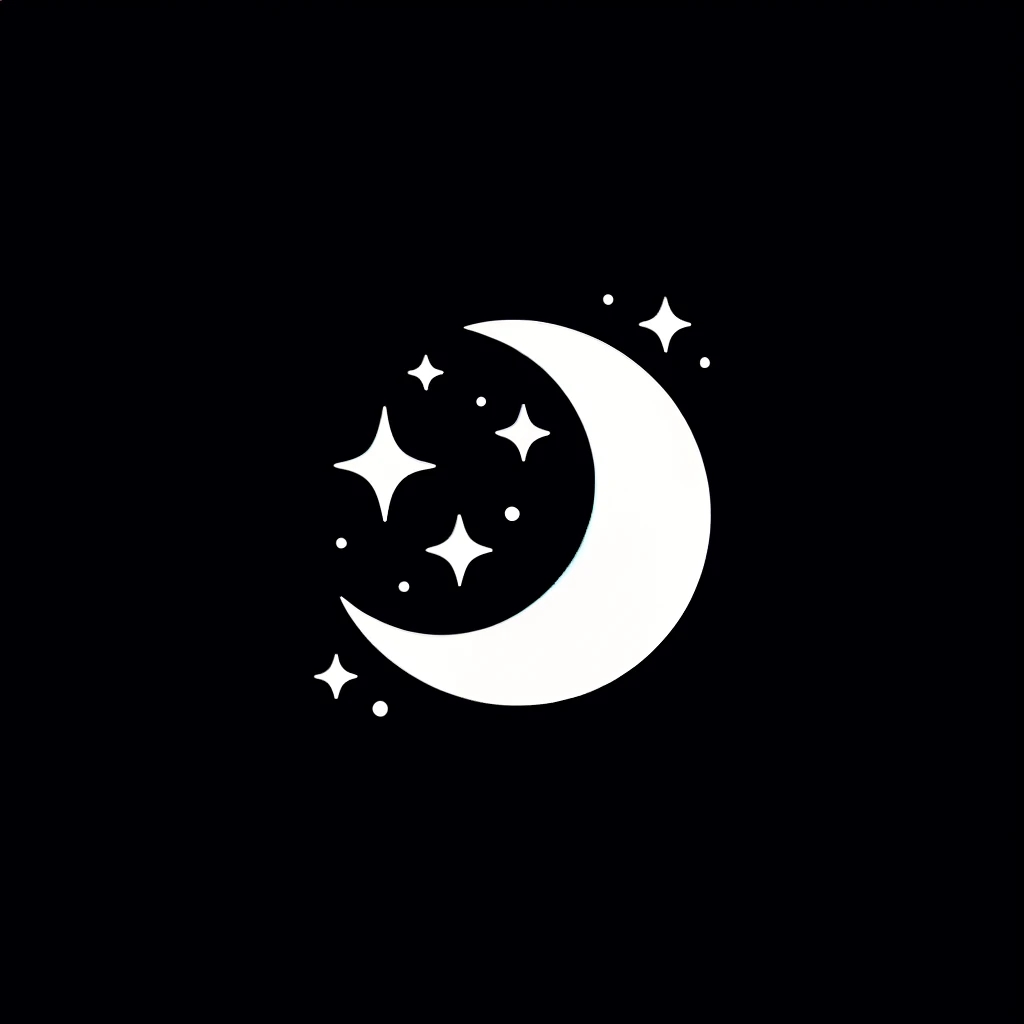
A Strawberry Moon, the Summer Solstice, and a Star Going Nova – Star Trails: A Weekly Astronomy Podcast
Episode 21
Join us on this week’s episode of Star Trails as we explore the wonders of the night sky for the week of June 16-22. We’ll start with the transition of the Moon from its Waxing Gibbous phase to the breathtaking Strawberry Moon, coinciding with the Summer Solstice. Discover the mythological stories and astronomical significance behind the lesser-known summer constellations Sagitta, Vulpecula, and Corona Borealis.
We’ll delve into the mysterious and imminent nova of T Coronae Borealis. Plus, learn about solstices and equinoxes in our Astronomy 101 segment.
Transcript
Welcome back stargazers! I’m Drew, your guide to the night sky for the week of June 16th to the 22nd. This week, we have an exciting lineup of celestial events, so let’s dive right in!
This week, the Moon transitions from its First Quarter phase to a Full Moon. Starting the week, we’ll see the Waxing Gibbous phase, where the Moon is more than half illuminated. This phase offers excellent viewing opportunities with increased illumination, perfect for observing the lunar surface in detail.
By the end of the week, on June 21, we’ll witness the Full Moon, known as the Strawberry Moon. Named by Native American tribes after the wild strawberries that ripen at this time, it’s also called the Rose Moon, Hot Moon, and Mead Moon, reflecting diverse cultural interpretations. The Strawberry Moon typically appears larger and brighter, making it a stunning sight. This year, it coincides closely with the Summer Solstice, adding extra significance as we celebrate the peak of the growing season and the longest day of the year. Be sure to find a comfortable spot with a clear view of the horizon to fully appreciate the Strawberry Moon’s rise and its journey across the night sky.
All the planets this week are morning risers. Saturn ascends first, appearing near Aquarius in the eastern sky after 1 a.m. It’s followed by Mars in Aries around 3:30 a.m. and Jupiter in Taurus about an hour before dawn. Mercury and Venus are too close to the Sun to be visible this week.
Uranus and Neptune will require a telescope, but you can find them in the pre-dawn hours. Neptune rises near Pisces around 2 a.m., and Uranus appears over the horizon around 4 a.m. in Taurus.
Today, we’re exploring three lesser-known summer constellations with fascinating lore: Sagitta, Vulpecula, and Corona Borealis.
Let’s start with Sagitta, the Arrow. This small constellation in the northern hemisphere’s summer sky carries significant mythological weight. In Greek mythology, Sagitta is associated with several stories, including the arrow Hercules used to kill the Stymphalian birds, one of his Twelve Labors. Another story ties it to the arrow of Eros, symbolizing the power of love and attraction. Despite its size, Sagitta is steeped in rich stories from ancient times.
Next, we have Vulpecula, the Little Fox. Created by the Polish astronomer Johannes Hevelius in the 17th century, this constellation doesn’t have a rich mythological history but was designed to fill gaps in the northern sky. Hevelius depicted Vulpecula as a fox carrying a goose in its jaws, originally naming it Vulpecula cum Anser, meaning “the little fox with the goose.” This whimsical creation showcases the creativity of astronomers who sought to map the entire sky.
Finally, let’s talk about Corona Borealis, the Northern Crown. This small but distinctive constellation represents the crown of Ariadne, the daughter of King Minos of Crete. According to Greek mythology, Ariadne helped Theseus defeat the Minotaur and escape the labyrinth. As a token of gratitude, the god Dionysus married her and placed her crown in the sky. Ariadne’s Crown symbolizes the reward and honor given to her for her bravery, reflecting the divine interventions and blessings in Greek mythology.
But there’s more to Corona Borealis than just mythology. One of its stars, T Coronae Borealis, also known as the Northern Crown, is a recurrent nova. This star is particularly interesting because it’s expected to go nova again soon. T Coronae Borealis, or T CrB, is a binary star system composed of a red giant and a white dwarf. These two stars are locked in a cosmic dance, with the white dwarf gradually siphoning material from its companion, the red giant. When this material reaches a critical point, a thermonuclear explosion occurs, resulting in a nova. T CrB has gone nova twice before, once in 1866 and again in 1946, making it a recurrent nova.
The reason T CrB is grabbing headlines now is that it’s showing signs of an impending nova. Observations have revealed increasing brightness and changes in its spectral lines. When T CrB goes nova, its brightness will increase dramatically, making it easily visible to the naked eye.
The last nova event of T CrB in 1946 was significant, providing insights into the mechanisms driving these explosions. With today’s advanced technology, the upcoming nova event promises even more detailed observations and data. Instruments like the Hubble Space Telescope and the James Webb Space Telescope are poised to capture this event in unprecedented detail.
For stargazers, T CrB is located in the constellation Corona Borealis, which is visible in the northern hemisphere’s spring and summer. The best time to observe this constellation is in July, when it is high in the night sky. Keep an eye on updates from sources like NASA and the American Association of Variable Star Observers (AAVSO) for real-time information on the nova’s progress.
This upcoming nova of T Coronae Borealis is a once-in-a-lifetime event for astronomers and enthusiasts alike, promising to be a spectacular sight and a significant scientific opportunity.
Let’s explore some fascinating deep-sky objects that are particularly prominent in the summer sky: the Ring Nebula, the Dumbbell Nebula, and the Lagoon Nebula.
First up is the Ring Nebula, also known as M57. Located in the constellation Lyra, the Ring Nebula is one of the most famous planetary nebulae in the night sky, lying about 2,300 light-years from Earth. The Ring Nebula is a stunning example of a dying star’s last stages. Through a small telescope, it appears as a small, faint ring, but larger telescopes reveal more of its intricate details and colors.
Next, we have the Dumbbell Nebula, located in the constellation Vulpecula. Discovered by Charles Messier in 1764, it is about 1,360 light-years away from Earth and larger and brighter than the Ring Nebula. Its distinctive shape, resembling a dumbbell or an apple core, can be seen through small telescopes.
Finally, let’s talk about the Lagoon Nebula, a massive interstellar cloud located in the constellation Sagittarius. It is about 4,100 light-years away and one of the few star-forming nebulae visible to the naked eye. The Lagoon Nebula is an active stellar nursery, where new stars are continuously being born. Under dark skies, it appears as a faint smudge to the naked eye, but binoculars and small telescopes reveal much more detail.
These deep-sky objects not only offer breathtaking views but also provide insight into the life cycles of stars and the dynamic processes occurring in our galaxy. Observing them can be a truly enriching experience for amateur astronomers and seasoned stargazers alike.
Our planet’s seasonal rhythms are governed by solstices and equinoxes, and understanding them connects us with the natural cycles that have influenced human culture and activities for millennia.
Solstices and equinoxes are key points in Earth’s annual orbit around the Sun, marking the change of seasons. They occur due to the tilt of Earth’s rotational axis relative to its orbital plane. This axial tilt is approximately 23.5 degrees and is responsible for the varying lengths of daylight and the intensity of sunlight received at different times of the year.
Let’s start with solstices. There are two solstices each year: the Summer Solstice and the Winter Solstice. The Summer Solstice, occurring around June 21, happens when the Sun is at its highest point in the sky at noon, directly above the Tropic of Cancer. This marks the longest day of the year for the Northern Hemisphere, with the most hours of daylight. It signals the official start of summer. Many cultures celebrate the Summer Solstice with festivals, such as Midsummer in Scandinavia and the ancient traditions of Stonehenge in England.
The Winter Solstice, around December 21, occurs when the Sun is at its lowest point in the sky at noon, directly above the Tropic of Capricorn. This is the shortest day of the year for the Northern Hemisphere, with the fewest hours of daylight. It marks the official start of winter. The Winter Solstice has been celebrated in various cultures as a time of rebirth and renewal, such as Yule in Northern Europe and Dongzhi in China.
Now, let’s talk about equinoxes. There are two equinoxes each year: the Vernal (Spring) Equinox and the Autumnal (Fall) Equinox. The Vernal Equinox, around March 20, occurs when the Sun is directly above the equator, resulting in nearly equal day and night lengths across the globe. It marks the official start of spring in the Northern Hemisphere. The increasing daylight hours signify the end of winter and the onset of warmer weather. The Vernal Equinox is associated with various spring festivals, such as Nowruz in Iran, Ostara in Pagan traditions, and Easter in Christianity.
The Autumnal Equinox, around September 22, occurs when the Sun is once again directly above the equator, leading to nearly equal day and night lengths. It marks the official start of autumn in the Northern Hemisphere. The decreasing daylight hours signal the end of summer and the approach of cooler weather. Many cultures celebrate the Autumnal Equinox with harvest festivals, such as Mabon in Pagan traditions and Thanksgiving in North America.
The Earth’s axial tilt and its orbit around the Sun are the primary reasons we experience solstices and equinoxes. During a solstice, one of the Earth’s poles is tilted closest to the Sun in summer or furthest from the Sun in winter. During an equinox, the tilt of the Earth’s axis is such
that it is neither tilted away from nor towards the Sun, resulting in nearly equal daylight and nighttime hours across the planet.
These events are predictable and have been crucial in the development of calendars and agricultural cycles throughout human history. By understanding solstices and equinoxes, we gain insight into the intricate dance between Earth and the Sun that shapes our environment and culture. Whether you’re observing the longest day of summer, the shortest day of winter, or the equal days and nights of the equinoxes, these celestial events remind us of our planet’s unique place in the solar system and the natural rhythms that govern life on Earth.
Thank you for joining me on this journey. Before you go, I invite you to check out our weekly e-mail newsletter on Substack, where you can receive night sky reports and astronomy news that we don’t always mention on the podcast. It’s completely free, and a great supplement to the podcast. I recently posted an article there about the search for extraterrestrial life, and I think you’ll enjoy it.
We’re also on Mastodon @star_trails and we’d love to hear from you. I’ll include links to both services in the show notes. Also, remember our website, startrails.show, where you can find all our episodes, including transcripts.
Until next time, keep looking up! Clear skies!
Support the Show
Join us on Substack to get the weekly night sky report as a newsletter, and additional astronomy news. Also, connect with us on Mastodon @star_trails.
If you’re enjoying the show, consider sharing it with a friend! Want to help? Buy us a coffee!
Podcasting is better with RSS.com! If you’re planning to start your own podcast, use our RSS.com affiliate link for a discount, and to help support Star Trails.


Leave a comment